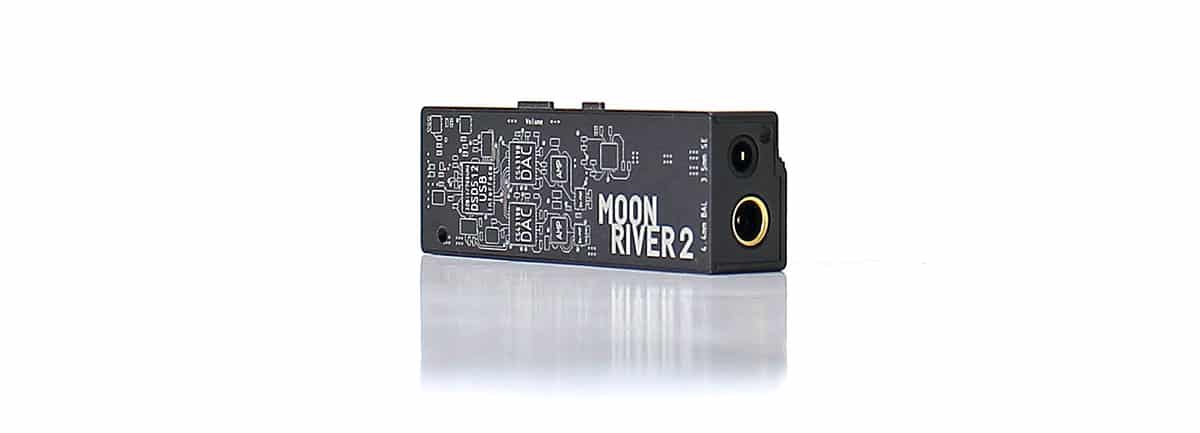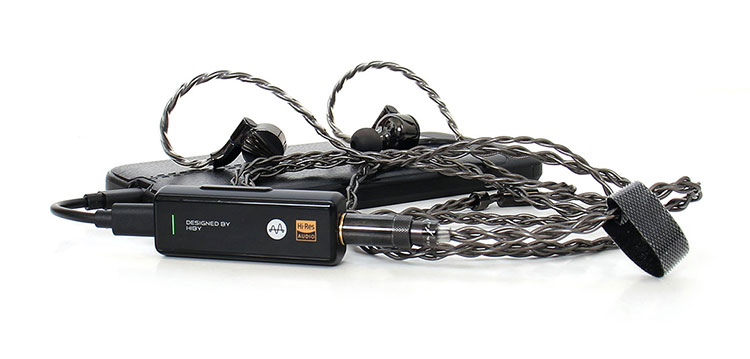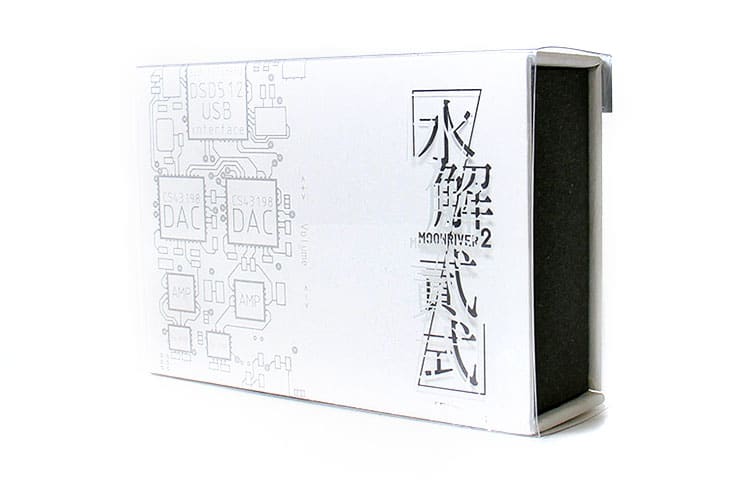Synergy
Efficiency
Of course, if you use a dongle DAC with a home PC you need not worry about power consumption. Not only that, the MoonRiver 2 runs cool or just slightly warm at times so no heat issues. My laptop never showed any significant power drain even when used at high volume levels.
If you use a mobile device then battery life is of concern here. The Moondrop MoonRiver 2 seems efficient with only a small amount of obvious battery drain but it’s not the best in efficiency.
If you control your volume levels and use headphones that are rather sensitive or IEMs of course power draw will be minimized.
But there is a higher-than-average power drain when the volume is turned up and in a sustained way compared to some other more efficient units.
You have to expect that if you want high amounts of power output as a tradeoff. On average usage drops battery life by 1% for every 8 to 12 minutes of listening using my 5000mah equipped mobile device which after all is still not bad.
Pairings
The MoonRiver 2 power output is ample and surprisingly so since it could power most cans in my collection and definitely never presented any issues powering any of my IEMs.
Just to mention some of the IEMs and headphones that were used included the HIFIMAN Sundara, Arya 2nd edition, Grado SR80x, and a 300Ω-rated SIVGA SV023.
All produced some good results and very satisfactory volume levels. Their review is coming soon so stay tuned. I could power up TRI I3 planar IEMs, single dynamic or multi-driver IEMs like the FiiO FH9 with ease.
I also used a Fostex T50RP variant which is rather hard to drive and still fell within an acceptable level of performance and volume but it did lack definition at top volume and bass seems to be suffering the most.
However, I thought I’d mention this since to me is still rather impressive for a dongle to have the ability to drive such hard-to-drive cans.
It was rather easy to pair the Moondrop MoonRiver 2 because of its neutral character. However, it still remains a notch above neutral and veers to a touch of warmth while never did it sound veiled or did it lack accuracy in staging and was actually better than most in those mentioned areas.
Select Comparisons
HiBy FC5
$159.00
Technical
The HiBy FC5 is a contrasting design overall compared to the MoonRiver 2. It uses a single ESS ES9281PRO DAC chip coupled to dual ES9603Q amplifier chips. Both these chips were made to work together perfectly in perfect synergy.
One of the major differences here is that the HiBy FC5 does not have a 3.5mm output and just has a 4.4mm, but HiBy supplies an adapter which makes me think.
How can a balanced output be converted to a single-ended so easily? It probably has a setup similar to an S balanced out similar to what iFi Audio makes.
Some feature sets are similar. There’s onboard volume control, and a USB-C input connector in a similarly sized shell although visually one cannot mistake them even from afar. The HiBy FC5 is a touch more rounded and filled in so it seems larger.
The HiBy FC5 can handle MQA but drops DSD down to 128 which is not a big deal breaker. However, power output seems low and HiBy lists one power output number at 125mW per side which I believe is from the balanced circuitry and not SE since it only has one output jack.
Design
Most will prefer the rounded corners and smooth edges which make the HiBy FC5 the more pocket-carry-friendly unit. The onboard FC5 sample rate LED indicator is a subtle slither of light unique to the FC5 while the MoonRiver 2 just sports a conventional LED.
The FC5 glossy black finish is actually very common. What’s not so common is the MoonRiver 2s body style and the step pattern which to me almost resembles an archaeological find up on the moon. So, can we call the MoonRiver 2 a moon structure-themed dongle DAC?
Both models have onboard volume controls but the MoonRiver 2 dongle has a more refined one for the simple fact that it works separately from the source volume which can give the user a more precise adjustment and that’s not counting the gain control.
Performance
The HiBy FC5 is a very dark, warm-sounding dongle DAC but its power output seems quite low compared to the MoonRiver 2. So, I would consider the FC5 better suitable for IEMs and very sensitive headphones with a bright signature.
They both have a very low amount of hiss if any. However, I still think the MoonRiver 2 is a better performer in this aspect since the hiss is absent even at high gain and it seems the FC5 has a safe tuning that remains below a certain threshold to maintain itself within a safe margin of performance.
ddHiFi TC44C
$119.00
Technical
The ddHiFi TC44C is a dongle DAC that has gained popularity and probably so because of its small size and good performance ratio. The TC44C is another dongle DAC that went the Cirrus Logic route. Dual CS43131 WLCSP chips lay inside the small form factor shell.
Both dongle DACs run similar digital formats with both models lacking MQA but both equally run bit rates on DSD at up to 256. The MoonRiver 2 however can reach 32BIT/768kHz PCM versus the TC44c which can do 384kHz max.
Honestly, most will be fine with either, since those very high bit rates are rarely used.
Design
How did ddHiFi put so much hardware inside such a small shell? They used 2 separate boards and stacked and interconnected with OCC copper internal connection lines which saved lots of space. The TC44C is half the size of most dongles but is rather chubby around the waistline.
The ddHiFi TC44C has no onboard volume control but is the only model within this comparison that comes with a rather cute protective cover that DD HiFi stated would only come with the first 600 units.
However, it seems they had a change of heart and came out with another cover that has a slightly different shade and color so you’ll probably get one too and I thank DD HiFi for listening.
Performance
For its size, it sure packs a punch. The TC44C is a deceiving-looking dongle because on its first appearance you would think it’s not going to produce so much power with such good performance to boot but it surpasses most first-generation dongles by a noticeable amount.
The TC44C is a more neutral-sounding DAC and although the MoonRiver 2 is neutral it also throws in a splash of warmth. So, the more clinical of the two is the TC44C but there is a musical aspect to the MoonRiver 2 that makes it a touch more interesting to listen to.
It’s obvious the MoonRiver 2 will perform best since it uses dual CS43198 chips which are a step above the CS43131. They offer similar clarity with the CS43198 edging out performance-wise in frequency extension and better staging capabilities by a small margin.
Our Verdict
For a debut dongle, Moondrop sure came out swinging and actually went a step above some by making the MoonRiver 2 which seems more refined as far as sound characteristics go. Especially when it comes to the stage size and accuracy.
It has plenty of driving power and a very low noise floor. This is one of the areas Moondrop focused on and was concerned about since it seems to be one of the most important characteristics dongle DAC buyers are looking for. Obviously, Moondrop didn’t give us a blind eye and did their research beforehand.
So, although the introductory price tag might seem slightly high for some, you get a dual top-tier CS43198 DAC which is an upgrade from the CS4399, with a wide frequency response, a low noise floor, and some of the best staging capabilities which make this dongle a bit of a bargain.
Moondrop MoonRiver 2 Specifications
- Product Name Moondrop MoonRiver 2 DAC / AMP
- Weight 1731 grams
- Size 8×19.4×12.5mm
- Earphone Jack 5mm Single-ended, 4.4mm Balanced headphone jack
- Frequency Response 6 Hz to 85 kHz ± 1 db
- USB Interface USB Type C
- Background Noise 4mm 1.5µV / 3.5mm 1.2µV (AES17 20 kHz)
- THD=N 5mm 2Vrms 0.0008% @32Ω /4.4mm 4Vrms 0.0013% @300Ω
- SNR 5mm 123db / 4.4mm 131db (A-weighted)
- Line Out 5mm 2Vrms (High) 1.4V (low) / 4.4mm 4Vrms (high) 2.8Vrms (low)






